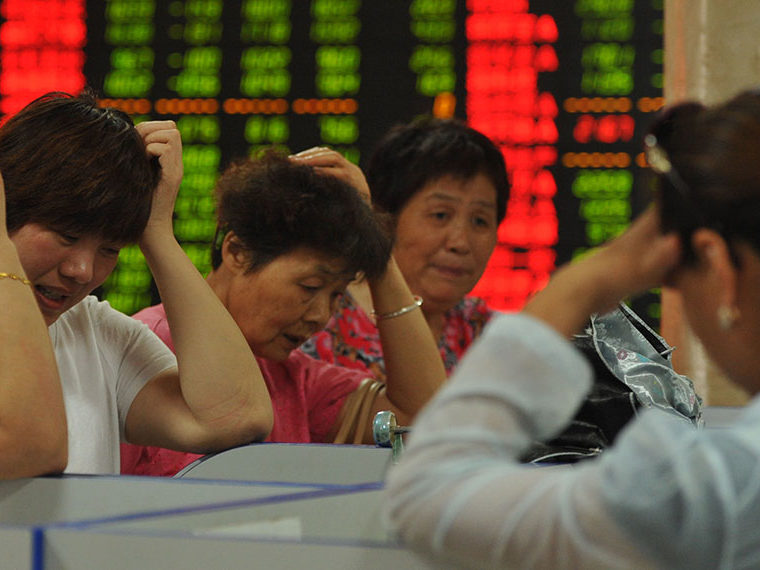As a group, Chinese futures traders more likely to suffer margin call than to profit
For some investors, a market rate of return, be it the Standard & Poor’s 500 Index, or 100 shares of Tesla, isn’t enough. To juice their returns, they buy stock or other investment vehicles on margin — meaning with borrowed dollars — to multiply their potential gains. This borrowing, of course, also magnifies their risk of a big loss.
Wall Street brokerages have long offered margin accounts to retail traders. More recently, retail investors could choose from over a hundred leveraged exchange-traded funds that use margin to try to goose returns.
And for some lesser investors margin accounts can be troublesome. For example, the popular Robinhood trading platform offers to lesser investors margin accounts, which critics assert do not come with sufficient risk warnings. When Robinhood settled with the Financial Industry Regulatory Authority in June, agreeing to pay nearly $70 million, one prominent regulatory issue was the platform’s allegedly misleading and confusing margin trading feature.
Opt In to the Review Monthly Email Update.
Examining How Margin Trading Impacts Returns
The question of how margin trading affects returns is explored in a working paper by UCLA Anderson’s Avanidhar Subrahmanyam, Tsinghua University’s Ke Tang, Beihang University’s Jingyuan Wang and Nanjing University’s Xuewei Yang. They use data on thousands of investors from a Chinese brokerage to better understand the role and impact of leverage on trading behavior and portfolio performance.
The authors use a proprietary data set that spans three years, covering 733 trading days between January 2014 and December 2016, and consisting of 39.4 million futures trading records transacted by 10,822 investors, a small share of whom (315, or 2.91%) are institutional investors.
The authors analyze investors’ behavior in terms of “trading cycles,” defined as a round-trip transaction for a specific contract (i.e., the investor opens a position in a futures contract and then clears the position). The median duration of these cycles is 51.6 minutes, and for more than a quarter of investors, the median duration is under 16 minutes, suggesting a significant share of investors trade with high frequency.
The most highly leveraged traders are also the most active ones: The decile with the highest leverage had the shortest trading cycles, the highest trade size and the most trades per day.
How did they fare? Higher leverage increased the volatility of an investor’s portfolio, as one might expect. Specifically, a one-unit increase in leverage corresponds to an 11% increase in annualized volatility. Leverage thus makes trading riskier.
Higher Risk Does Not End In Higher Returns
On average, the authors find, higher risk due to leverage does not translate into higher returns. Instead, their analysis suggests that leverage tends to reduce investors’ returns. One-unit increase in leverage implies, on an annualized basis, a net underperformance of 13%.
The key way in which leverage negatively affects returns is through margin calls. This is when a broker requires an investor holding levered assets to either deposit additional funds or securities or sell assets in a forced liquidation because the assets in the brokerage account have declined in value. Highly leveraged investors face an increased likelihood of experiencing a margin call. The higher the leverage, the authors write, “the higher is the probability of being mandatorily liquidated,” leading to daily returns that are, on average, more than 26% lower than in the absence of a margin call.
When the authors control for these forced liquidation events, leverage by itself almost disappears as an explanatory variable. “After controlling for margin calls, leverage does not play any significant role in investment returns; in other words, leverage materially reduces investment returns via forced liquidation,” the authors write.
Furthermore, highly levered investors are also highly active, and, by trading frequently, they incur significant trading costs that eat into their returns. Indeed, the authors note that even for a small subset of investors who successfully use leverage to earn high gross returns, “the accompanying high trading cost almost perfectly offsets these returns.”
A few skilled investors (eight, to be precise) in the dataset manage to use leverage to their advantage. They tend to be more experienced as measured by the age of their trading accounts and trade very frequently, between 42.4 and 478.7 times a day. Although their performance also takes a hit from large transaction costs, these skilled investors “earn superior returns by leveraging their trading,” to the tune of 50% higher annual net returns per unit of additional leverage.
Notably, skilled investors differ from unskilled investors in that they avoid behavioral biases such as holding on to losing investments and trading during more volatile periods. These are both behaviors whose loss-making is amplified with leverage. Leverage also has an asymmetric effect: When it forces a liquidation, investors are then locked out of any subsequent price rebound. Thus, while it may pay off for a small share of skilled investors, the authors conclude that for most people, it’s the other way around: “Investors on average pay for leverage.”
Featured Faculty
-
Avanidhar Subrahmanyam
Distinguished Professor of Finance; Goldyne and Irwin Hearsh Chair in Money and Banking
About the Research
Subrahmanyam, A., Tang, K., Wang, J., & Yang, X. (2021). Leverage is a Double-Edged Sword. http://dx.doi.org/10.2139/ssrn.3855181





